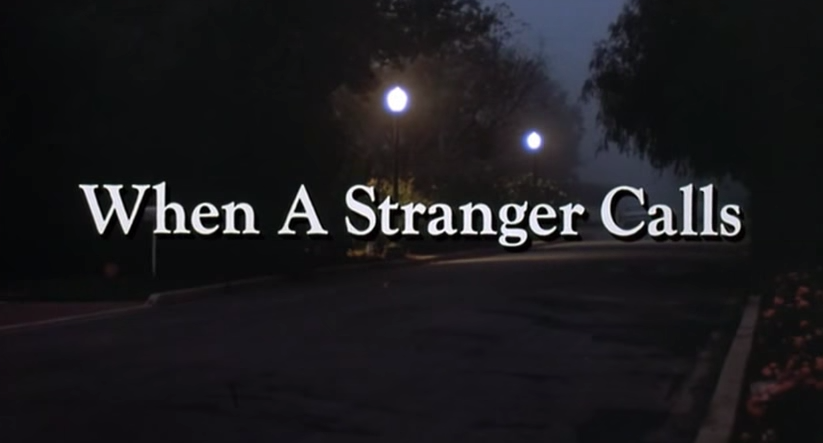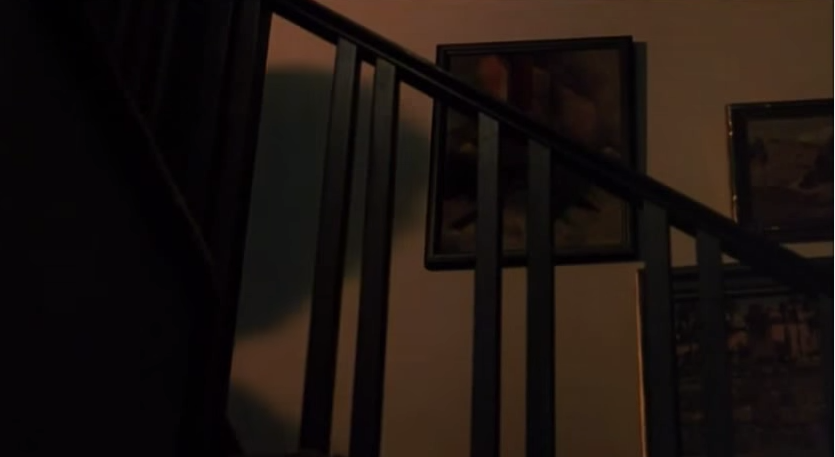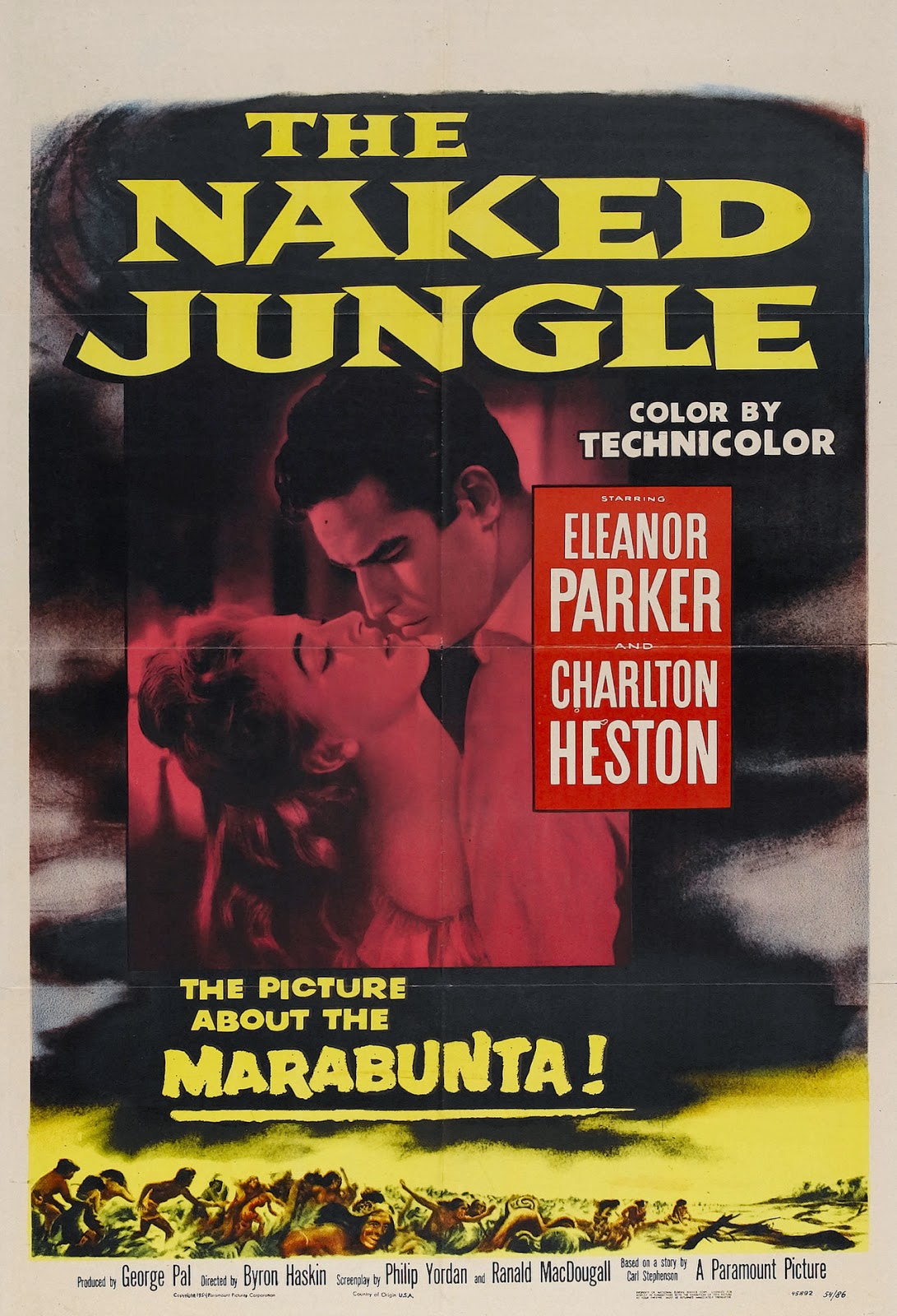Fred
Walton’s When a Stranger Calls (1979) remains one of the most effective
and terrifying horror movies made during the disco decade.
This
statement is accurate, I reckon, because I knew the film’s punch-line before I ever
saw the movie.
When
I was ten years old, my beloved aunt Vivian would frequently regale me with
horror movie stories at family gatherings. I just couldn’t get enough of these cinematic
tales, which she recited in every fantastic and grotesque detail. Vivian told
me, over the years, the stories of Halloween (1978), Alien
(1979), The Fog (1980) and When a Stranger Calls.
So
I actually knew that the film’s killer was calling “from inside the house” before I ever saw the movie’s first frame.
Yet
when I finally saw When a Stranger Calls with my own eyes, my pre-knowledge of that crucial “twist” made no difference whatsoever.
The movie scared the shit out of me.
Watching
the film again for the first time since 1999 (when I wrote Horror
Films of the 1970s), the opening scene still unsettled me, and left my wife feeling anxious and jittery as
we turned off the lights and went to bed.
And
yes, that’s absolutely the sweet spot for horror movies: the promise of a troubled
night’s slumber as you turn out the lights and your head hits the pillow.
Based
on an urban legend (the babysitter and the man upstairs…), When a Stranger Calls opens
with a meticulous, self-contained set-piece of near perfect execution. A high-school
age babysitter (Carol Kane) is inside a suburban house alone, and being
tormented by an increasingly creepy telephone caller. The frequency of the
calls escalate, and the police trace the call….
...And,
well, you know doubt know the rest.
When
a Stranger Calls
undeniably falters some in its second act, even as it establishes the pitiable
character of its boogeyman, Curt Duncan (Tony Beckley). The film also explores
the seedy terrain of late-1970s city life, but the movie’s lead, Charles During
(as Det. John Clifford) proves pretty unappealing.
Finally,
When
a Stranger Calls pulls itself back together with a rip-roaring finale
-- and one of the creepiest jump scares of the decade -- making the audience
forget how listless some scenes in the second act actually are
So
When
a Stranger Calls is not perfect, perhaps, in the sense that a film such
as Halloween
may be. But the film nonetheless opens and closes with some of the scariest
imagery in the 1970s genre canon.
“Have
you checked the children?”
High-schooler
Jill (Kane) arrives at the house of Dr. Mandrakis (Carmen Argenziano) to
babysit his two children, who are already in bed and asleep. The good doctor
and his wife leave for dinner and a movie, reporting that they will not return
until after midnight.
Jill
settles in, and begins to study in the family living room. But before long, she
begins to receive disturbing, threatening phone calls from a stranger. Jill contacts
the police, and they endeavor to trace the call.
Jill
learns, to her horror that the caller is inside the house, using the upstairs
phone line.
The
police, including Det. Clifford (Durning) arrive and apprehend the killer, Curt
Duncan (Tony Beckley), but not before he has murdered the children with his
bare hands.
Seven
years later, Duncan escapes from an asylum, and Clifford, now a P.I., resolves,
with Dr. Mandrakis’s funding, to kill him.
Clifford
follows Duncan’s trail to a city bar called Torchy’s, and to a barfly named
Tracy (Colleen Dewhurst). She has seen
Duncan on more than one occasion, and allows Clifford to use her as bait to
catch the killer.
Duncan
escapes, however, and chooses different prey.
Jill,
the babysitter he once stalked (and nearly killed), is now a mother herself,
with two young children…
“It’s
probably some weirdo. The city is full of ‘em.”
In
2017, iPhones and cell phones have perhaps made the central scenario of When
a Stranger Calls feel dated.
Now,
it is easy to call anyone, from any location, including the next-room-over. But
by the same token, that caller’s name is identified on a screen, so it’s
tougher to prank call folks too.
But
the standing assumption in 1979 was that telephone calls were coming from an
exterior location, from outside the house. When a Stranger Calls thus plays
wickedly with the status quo, and intriguingly, does so in the very year that
AT&T’s advertising agency coined the memorable slogan “reach out and touch someone.”
Curt
Duncan is someone who has taken that idea all-too literally. He uses the
telephone to psychologically terrorize his prey, and he utilizes his surprising
position -- inside the Mandrakis house -- to “touch” (or kill…) them.
The
film’s opening scene is elegant, simple, and beautifully shot and edited. Walton
doesn’t over-gird the sequence with too many elements or too many competing
ideas. Instead, the inaugural set-piece boasts a purity of intent, and allows
the audience to proceed from the assumption of a mystery phone caller outside
the house, and then, with increasing tension, pulls the rug out from that
particular assumption. In other words,
the movie tricks us.
I
admire the way Walton sets the terrain for the battle too. We meet Jill and the
Mandrakis parents, and then move into the living room, where the sitter does
her school work. A series of long shots establish both Jill’s isolation and
vulnerability, and then the shrill ringing of the telephone interrupts the
solitude of the night.
Jill
explores her terrain tentatively at first, a half-lit world of doors that are
half-open, and freezer ice machines that make disturbing noises. This scene is true to life in a very visceral,
literal sense. How many times have you heard something you can’t readily explain,
and explored your house in the dark, seeking the source?
I
have a couple of rowdy cats, so I feel like I go tracking down weird nocturnal noises
in the dark at least two or three times a week.
I don’t expect or anticipate finding anything weird or disturbing or
dangerous.
But
the thought that I could do so is always there in the back of my mind, lurking.
We
then view Jill from outside the house, through the windows, and the visual
impression is of a bird in a cage.
Another
impression created by this composition is that Jill is being watched or stalked
from the outside of the house. We thus mistake
the perspective for a point-of-view subjective shot. Of course, this isn’t so. We are observing that Jill is in danger,
trapped inside. There is no danger
outside.
This is the film's "inversion" principle, which I love. When Jill locks herself in for safety's sake (on the instructions of the police), she is not saving herself, she is trapping herself.
As
the scene progresses, and events reach a fever pitch, the phone seems to take
on a larger stature within the frame. The device is seen -- looming ever-larger
in the frame -- in insert shots and close-ups. The phone is the avenue by which
Jill is terrorized, and so its importance seems to grow as the scene gears
up. In Poltergeist (1982), the TV is the
portal through which terror enters the world of the normal or routine. In When a Stranger Calls, it is the
phone that introduces a sinister element to the real world.
After
the killer’s down-right terrifying enunciation of a mission statement -- he wants
Jill’s blood, all over him -- we then get the panicked police calling Jill and
warning her to get out of the house…that the killer is inside the home with her.
Jill runs for the door and the film cuts to the upstairs hallway, where light
bleeds suddenly out of a bedroom, and a silhouette appears.
We
see no killer, no weapon. There is no violence at all, actually, only a beam of
light and that menacing shadow to suggest the presence of evil.
And
the restraint works like absolute gangbusters. What we fear is not a particular
person or even a particular pathology, but rather the Id-like specter that can,
somehow, pierce the balloon of safety we have erected around our neighborhoods
and our homes.
Uniquely,
the second act veers in the opposite direction, making Duncan much more than a
shadow or “Shape.” We see him hitting on
Tracy (Dewhurst) in Torchy’s and getting beaten up by another bar patron. We see him living on the streets, in
skid-row, trying desperately to connect to someone.
The malevolent silhouette of the first act
becomes a hauntingly human – and frail -- individual in the second act.
In
a sense, this is the way of all fear. It starts out palpable and urgent when we
don’t understand it. But when it becomes
recognizable or quantifiable, the sense of terror lessens.
I
must confess, I have mixed feelings about this development in the film. On one
hand, familiarity diminishes the sense of horror, as I wrote in Horror
Films of the 1970s. The more we see that Duncan is a slight-of-build,
mentally-ill British man, the less fearsome he becomes. Horror absolutely thrives on the things we
don’t know and don’t understand, not the things we do know and do understand.
Oppositely,
it is interesting and ambitious that When a Stranger Calls doesn’t hew
to a two-dimensional approach to its boogeyman. Duncan is not Evil Incarnate,
but a deeply sick man whom society has abandoned. I suppose my real problem with the second act
may be that Duncan seems no match -- physically or mentally -- for the portly,
grave-faced veteran cop Clifford, a man who is willing to commit murder outside
the confines of the law to bring his quarry to justice.
But
even this somewhat deflated second act possesses moments of raw power, and more
importantly, fear.
On
two occasions, director Walton takes the audience on a night-time sojourn through
the seedy city, from Torchy’s to Tracy’s apartment building. The camera seems to move further and further
away from her as she walks home by sickly-green city-light. As the camera
retracts, and Tracy gets ever smaller in the frame, one can’t help but get the
impression of a world in which the city has been ceded to criminals, or to the
sick. This isn’t a place of safety or
security, and Walton’s expressive camera work expresses this notion well.
Again
-- in the second act this time -- Duncan violates the safety or sanctity of the
hearth, of the home. He hides in Tracy’s hall closet and leaps out at her when
she least suspects danger. This scene is lensed almost entirely in close-up,
which makes for a real and dramatic switch from the long, lonely, dark shots of
the city streets. Walton’s visual approach and selection of shots seems to
suggest that Duncan’s violation is highly intimate, even if his stalking
grounds feel lonely, abandoned, and vast.
I
suppose the real test of Beckley’s effectiveness in the role of Duncan is that
the final act works effectively. Curt goes
after Jill again, in her suburban home this time, and hides in her bed -- in
plain sight -- as her sleeping husband.
In extreme, warped close-up, Duncan looks sick and twisted, and attacks
Jill, and the moment is utterly terrifying.
Even when he know the killer, then, his disruption of our expectations
of safety has a mighty impact.
Gazing
at Walton’s visual technique, one might be able to detect a subtle message or
subtext here. Society (epitomized by the cold, clinical Dr. Monk) has given the
cities to the crazies, to the violent, to the wackos. And worse, those crazies aren’t satisfied
with the territory that has been ceded to them. They
are encroaching ever deeper into the suburbs, appearing in places that should
be safe: the bedrooms of our most cherished family members: our children or our
spouses.
This
leitmotif may make the film sound paranoid, but the horror genre is not, largely, about
reason or logic, but rather about the fears that won’t go silent, even when we know
they aren’t entirely rational.
When
a Stranger Calls
is really about the crazy “outside” making in-roads “inside,” not just in your
family room or kitchen, but inside your head too, in your very imagination.
The
killer is inside the house already -- and has been for some time -- but you don’t
know it yet.
























This, along with Bob Clark's "Black Christmas", was a scarier movie to teen girls like me than "Halloween" ever thought of being, because they seemed less like horror movies and more like expressions of the real. The oppressive, claustrophobic angles placed us directly in Jill's shoes. We all WERE babysitters, you see; we flinched at noises we weren't about to investigate in an unfamiliar house, and we jumped when the unfamiliar phone rang and rehearsed how to answer so as not to tip off the caller that the Smiths weren't home and the teenage sitter was alone there with the kids . . . and then to find the caller was IN THE HOUSE!
ReplyDeleteThis period of the 70's cinema did not just *seem* paranoid, it reflected reality. Cities were indeed scummy, gross places where strikes resulted in tons of uncollected garbage, the heart of the city often consisted of porno theaters and street hustlers and broken down infrastructure. It looked bad, felt bad, smelled bad, was bad. The rise of "Dirty Harry" and "Death Wish" as franchises expressed the need for regular people to strike back at a hopelessly deteriorated environment in which they were degraded and victimized. And then serial killer Ted Bundy came to prominence in the news around this time. Before Bundy, average people imagined murderers as rather obvious monsters--not as a benign-appearing regular guy, even a handsome one, who compulsively picked someone out and stalked her in a highly personal fashion. I have to think both "When a Stranger Calls" and "Black Christmas" were products of the way people absorbed and internalized the sense of violation represented by Bundy, who moved all over the country to stalk women--even a dorm full of women--with impunity and strike from within their homes. No place and nothing was sacred.
Charles Durning in this role is no different from Bronson in that he's stalking the stalker to provide a justice that people felt "the system" was incapable of providing anymore. And I can never get enough of the great Colleen Dewhurst.